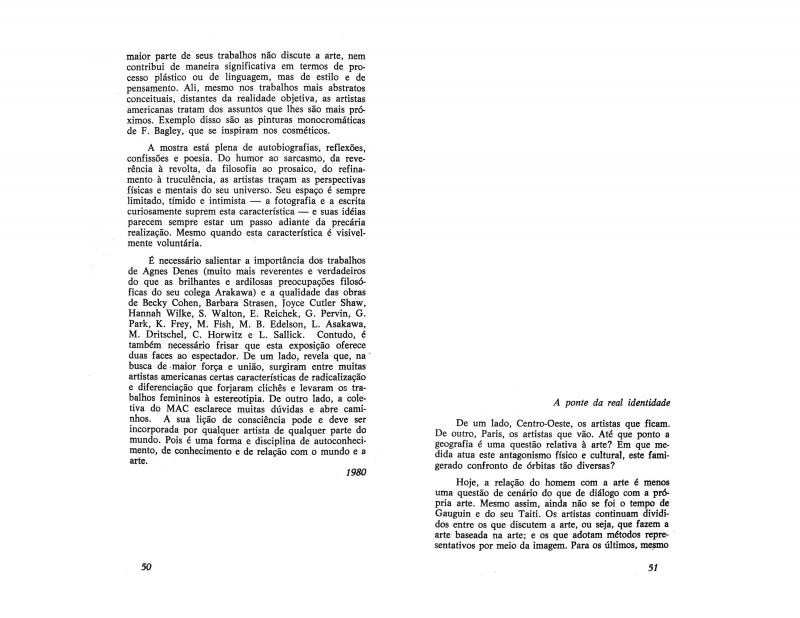In this interview by Lisette Lagnado, Sheila Leirner asserts that as biennials are exhibitions, their format must be “analogous to language,” that is, works should be juxtaposed with no intention of representing individual nations. In Leirner’s view, this approach will give shape to new readings of the work and cast off the political messages imposed on art. Leirner’s global vision of art is evident in this interview, in her work as the curator of the biennial, and in articles authored by her and published in the seventies, among them “A ponte da real identidade” [doc. no. 1075665]. More recently, in an overview of biennials entitled “A Bienal faz 50 anos: onde fica a arte?,” Leirner returns to some of the ideas expressed in this interview and in earlier publications: the pursuit of art without borders, biennials geared to diversity and critical analysis, and other factors to be considered in putting together mega-exhibitions.
French-Brazilian journalist and art critic Sheila Leirner formed part of the Conselho de Arte e Cultura da Bienal from 1982 to 1983. She was the curator of the XVIII São Paulo Biennial held in 1985 and of the XIX Biennial held in 1987. After studying the sociology of art in France, she worked as an art critic for the newspaper O Estado de S. Paulo in 1975. A compilation of her essays was published under the title Arte e seu tempo (São Paulo: Editôra Perspectiva, 1991). Since 1991, she has lived in Paris where her work involves art administration. She was the Latin American representative to the Galerie nationale du Jeu de Paume from 1993 to 1999 and was a member of the French chapter of the International Association of Art Critics (AICA). She has contributed to countless magazines and supplements in France and Brazil, among them Beaux-Arts Magazine, Europe Magazine Littéraire, Revista da USP, and Cadernos de Literatura Brasileira. She sits on the UNESCO-ASCHBERG Bursaries for Artists.
Researcher, art critic, and writer Lisette Lagnado (b. 1961) has done extensive work with the Projeto Leonilson, created shortly after the time of that artist’s death in 1994. The initial aim of the project was to put together a catalogue raisonné of Leonilson’s work to facilitate its dissemination. A close collaboration with the Serviço Social da Indústria, Lagnado’s work with the project—specifically, the publication of a book and the organizing of an exhibition—constitute the most successful effort of the project to date (see “Leonilson: símbolos coloridos” [doc. no. 1110768]).
Sheila Leirner was the chief curator of the two São Paulo biennials mentioned above. Those events are presented in her “Introdução” to the XVIII International São Paulo Biennial in 1985 [doc. no. 1111107] and “Introdução” to the international XIX São Paulo Biennial in 1987 [doc. no. 1110910].




